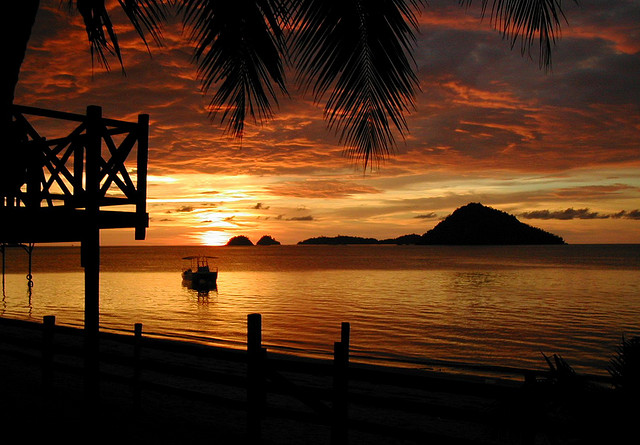For a little over a year, between 2013 and the first quarter of 2014, Malaysia’s policy surrounding the South China Sea dispute hit a shroud of confusion. Taken aback by Chinese naval patrols around James Shoal (Beting Serupai in Malay), only 43 nautical miles off the coast of Sarawak State, the government responded with a baffling array of silence, denial, and nonchalance. Malaysian authorities had been caught off balance by China’s audacity, which they had not expected given Kuala Lumpur’s perceived special relationship with Beijing.
Now there is a growing sense of disquiet, if not wariness and exasperation, in Malaysia. There are more questions being asked about Chinese intentions and they are being asked more insistently. While elements of the special win-win relationship between Malaysia and China remain on the political and economic fronts, a very different reality exists in the South China Sea.
Until recently, a Chinese Coast Guard (CCG) vessel had been anchored near South Luconia Shoal (Beting Patinggi Ali), just 84 nautical miles off the coast of Sarawak, since September 4, 2013. Markers placed by the Malaysian government have mysteriously disappeared, replaced by those written in a “foreign language,” according to parliamentary proceedings. The CCG ship has also reportedly chased away Malaysian fishermen from the area and even threatened them, prompting complaints and a call to action by the Sarawak government and the fishermen’s association of Miri, the state’s second largest city.
Given the domestic political significance of Malaysian Borneo—Sarawak and neighboring Sabah State—if this keeps up the federal government will be compelled to rethink its options to respond in these waters. Malaysian naval and maritime enforcement vessels have already stepped up the frequency of patrols in the area, to 345 days in 2015 (as of December 14) from 269 in 2014. The government is also looking to boost the Malaysian Maritime Enforcement Agency’s assets and capacity, including expanding its range of operations to 200 nautical miles from shore.
Minister in the Prime Minister’s Department Shahidan Kassim first raised the matter of the CCG ship’s presence at South Luconia Shoal in Parliament in March 2014. In June 2015, he broke with convention by taking to Facebook to highlight the “intrusion.” His post, complete with aerial photos, marked a departure from the Malaysian government’s usually muted approach to the South China Sea disputes. Shahidan’s actions may have been anomalous given the quiet diplomacy that still prevails among the political and military leadership, but they reflected many Malaysians’ growing frustration at Chinese brazenness.
The CCG vessel left the area around South Luconia Shoal during the ASEAN Summit and related meetings held in Kuala Lumpur in late November 2015, perhaps as a matter of face. The intractability of the South China Sea issue had been highlighted earlier that month when no joint statement was issued by the 18 members of the ASEAN Defense Ministers Meeting Plus due to bitter divisions over reference to the dispute. Nonetheless, Malaysia put to rest any concerns that it would be an obsequious chair vis-à-vis China.
The chairman’s statements of the ASEAN Summit and the East Asia Summit each contained five paragraphs dedicated to the South China Sea, expressing concern about the possibility of militarization of outposts and the erosion of trust and confidence. The chairman’s statements of the ASEAN-China Summit and the ASEAN-U.S. Summit each contained two paragraphs referencing the South China Sea, though the former omitted any mention of land reclamation or militarization. All the statements affirmed the importance of the 2002 Declaration on the Conduct of Parties in the South China Sea (DOC) and of concluding a binding Code of Conduct (COC), as well as the observance of international law. The East Asia Summit chairman’s statement even referenced the assurances given by President Xi Jinping during his earlier visit to the United States that China would not pursue militarization in the South China Sea.
Malaysian armed forces chief Zulkifeli Mohd Zin observed during the October 2015 Xiangshan Forum in Beijing that time will judge China’s—and every party’s—sincerity in the South China Sea. Time, however, is not a luxury all claimant states have. There is already doubt that the CCG vessel’s departure from South Luconia Shoal was permanent. And the scale and intensity of environmental destruction caused by China’s land reclamation work in the Spratly Islands means that marine resources may be substantially depleted by the time there is any effective and meaningful implementation of the DOC or COC.
Despite growing apprehension both internally and externally, the Malaysian government will continue to rely on diplomacy and restraint for its policy in the South China Sea. Instruments such as the DOC and COC, and proposals for an expanded Code for Unplanned Encounters at Sea and an analogue for overflights, will remain highly valued by Malaysian officials. So too will adherence to international law, including the United Nations Convention on the Law of the Sea.
Meanwhile the Malaysian government might be better off tempering its own expectations of a mutually recognized or reciprocal special relationship with China. If both sides were really placing stock in such a relationship, then it should be reflected across the board, including in the South China Sea. This does not mean that Malaysia should or will begin choosing sides between China and others in any conceivable future. But it means that in the face of rising Chinese assertiveness and a rapidly changing South China Sea landscape, Malaysia will no longer be as averse to recalibrating its policy as needed to protect, preserve, and advance its national interest.
Malaysia may, in fact, already be at that point.
